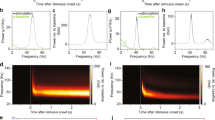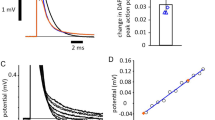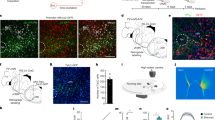Abstract
WHEN a glass electrode filled with KCl is placed on the eye of a housefly bursts of nervous activity occurring even in darkness may be observed using an oscilloscope. We present evidence that the diel changes in burst frequency represent a true circadian rhythm. The source of these signals obtained from the housefly eye is as yet unknown. Dethier1 reported two types of electrical activity as recorded externally from the insect eye, the electroretinogram (ERG) and spontaneous nerve firing. The latter activity was related to light intensity and movement in the visual field.
This is a preview of subscription content, access via your institution
Access options
Subscribe to this journal
Receive 51 print issues and online access
$199.00 per year
only $3.90 per issue
Buy this article
- Purchase on Springer Link
- Instant access to full article PDF
Prices may be subject to local taxes which are calculated during checkout
Similar content being viewed by others
References
Dethier, V. G., The Physiology of Insect Senses (Methuen, London, 1963).
Brady, J., Adv. Insect. Physiol., 11, 1–113 (1974).
Jahn, T. L., and Crescitelli, F., Biol. Bull., 78, 42–52 (1940).
Aréchiga, H., and Wiersma, C. A. G., J. Neurobiol., 1, 71–85 (1969).
Author information
Authors and Affiliations
Rights and permissions
About this article
Cite this article
SHIPP, E., GUNNING, R. Endogenous rhythm of nerve activity in the housefly eye. Nature 258, 520–521 (1975). https://doi.org/10.1038/258520a0
Received:
Accepted:
Issue Date:
DOI: https://doi.org/10.1038/258520a0
Comments
By submitting a comment you agree to abide by our Terms and Community Guidelines. If you find something abusive or that does not comply with our terms or guidelines please flag it as inappropriate.



